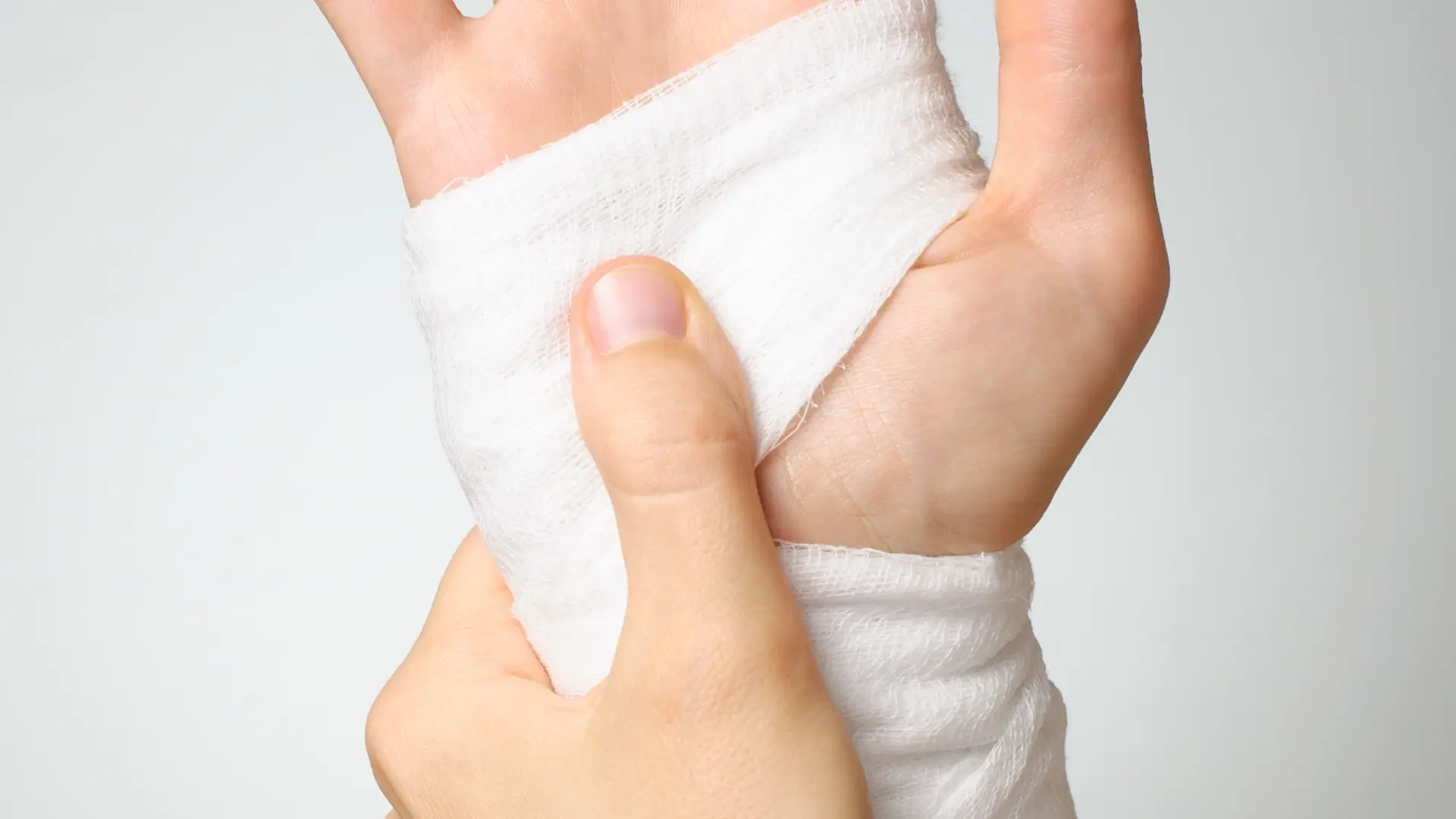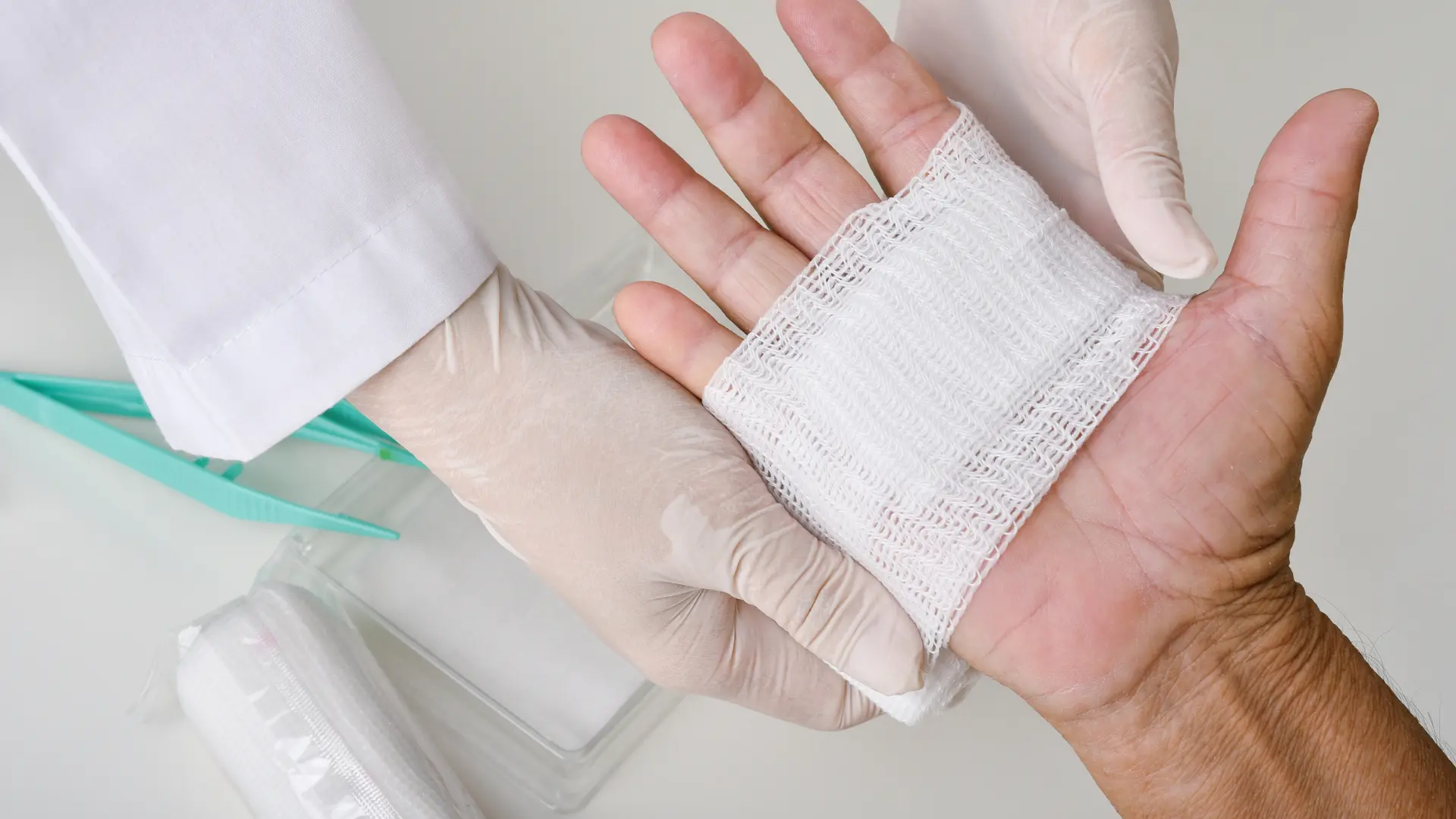Navigating the complexity of treating trauma-related injuries necessitates a multifaceted strategy that includes medical skill, compassionate care, and cutting-edge therapies. What are the types of traumatic wounds? How are traumatic wounds treated? To provide answers to these questions and many more, we have prepared a detailed and informative article on traumatic wounds. Continue reading to explore Dr. Burak Sercan’s solutions for trauma wounds.
Types of Traumatic Wounds
Traumatic wounds can occur for various reasons and can have different characteristics. Here are a few types of traumatic wounds:
- Abrasions: Surface wounds caused by friction that frequently result in the loss of the top layer of skin.
- Lacerations: Cuts or tears in the skin, varying in depth and length, caused by sharp objects or trauma.
- Puncture Wounds: Penetrating injuries caused by sharp items that result in tiny, deep skin holes.
- Crush Injuries: occur when a bodily component is subjected to severe pressure, causing damage to the underlying tissues and structures.
- Burns: Traumatic wounds created by heat, chemicals, electricity, or radiation that induce varied degrees of tissue damage.
- Gunshot Wounds: Gunshot wounds of different severity are caused by penetrating injuries produced by firearms.
Assessing Traumatic Wounds
Assessing traumatic wounds is an important step in delivering focused medical therapy. This stage varies depending on factors such as the nature of the injury, its cause, the patient’s condition, and many other conditions. Healthcare specialists often evaluate the wound size, location, and any underlying structure damage. Factors such as the method of damage, the presence of foreign objects, and the amount of contamination are also taken into account. Imaging procedures, such as X-rays or scans, may be used in addition to a visual assessment to provide a more in-depth picture of the degree of the injuries.

Advanced Wound Care Techniques
Advanced wound care treatments have evolved to speed up the healing process and improve patient outcomes. These novel procedures go beyond established methods and are targeted to complicated wounds or circumstances that may obstruct normal healing. Advanced wound care procedures include a variety of tactics, such as the use of bioengineered tissues, growth hormones, and complex dressings meant to promote healing. Negative pressure wound therapy and hyperbaric oxygen therapy are also used to enhance tissue regeneration and speed up the recovery process.
Complications and Infection Control
In wound care treatment, complications, and infection control are critical factors. It is critical to address difficulties as soon as possible to avoid more problems and encourage efficient recovery. One of the most prevalent consequences is infection, which can greatly hinder healing. Strict infection control techniques include keeping a sterile environment throughout wound care treatments, following adequate cleaning standards, and using prophylactic antibiotics as needed.
Conclusion
In summary, wound treatment for trauma patients is a personalized and meticulously followed process. To achieve the best outcomes, it is crucial to work with an experienced specialist and team who make you feel comfortable. Treatment can be a multidimensional, discipline-demanding process. You will have responsibilities such as regular check-ups and strict adherence to the doctor’s directives. Mental health and the emotional support you receive are also crucial throughout this process.

Dr. Burak Sercan Remedies To Chronic Wounds
As mentioned in the article, the treatment of chronic wounds requires expertise and experience. It wouldn’t be an exaggeration to say that the most crucial stage of treatment is this. Choosing the right doctor will optimize the results of your treatment, creating the healthiest version of yourself. Dr. Burak Sercan is the person of choice if you want to achieve the best results. Leaving a mark in the industry with enchanting transformations and lives touched, Sercan and his team work with care and discipline. Contact us now to get more information or to schedule your appointment!
FAQ’s about Trauma Patients
What are the classifications of trauma wounds?
Abrasions, lacerations, puncture wounds, contusions, avulsions, crush injuries, burns, and gunshot wounds are all examples of trauma wounds. For optimal recovery, each categorization necessitates a different treatment method.
How long does it take for a traumatic wound to heal?
The length of time it takes to recover a traumatic wound depends on factors such as the nature, size, and depth of the wound, as well as the individual’s overall health. With adequate treatment, superficial wounds such as abrasions can heal in a matter of days to a week. Deeper wounds, such as lacerations or puncture wounds, may need one to two weeks or more to heal.
What are the stages of traumatic wound healing?
The stages of traumatic wound healing include hemostasis, inflammation, proliferation, and remodeling, with each step contributing to the wound’s full and progressive healing.
What is the most painful stage of wound healing?
The inflammatory stage is frequently regarded as the most painful stage of wound healing. Nerve endings are activated during this phase, resulting in pain, redness, swelling, and warmth surrounding the wound site. The inflammatory response is an important part of the healing process because it helps eliminate debris and bacteria, but it can be uncomfortable for those who are in severe pain during this period of recovery.






